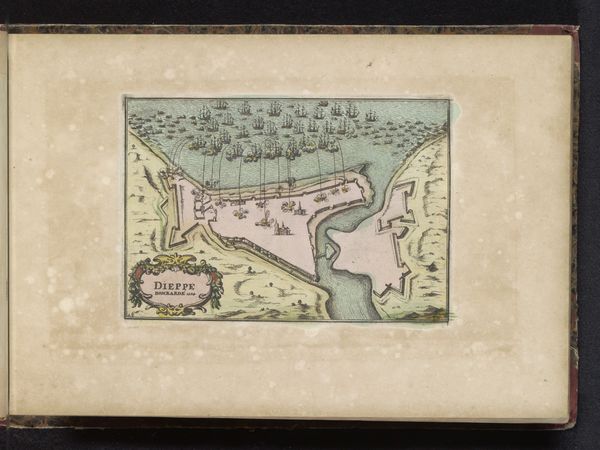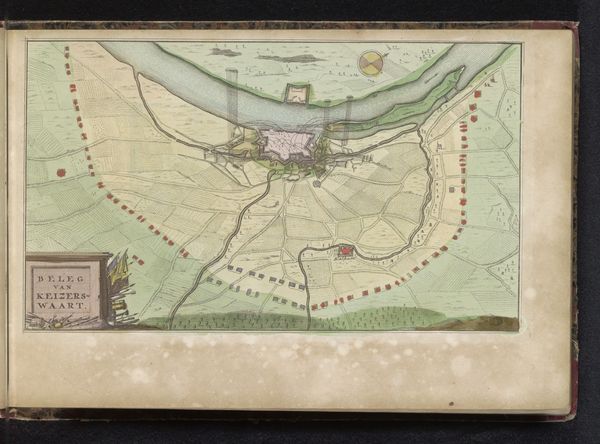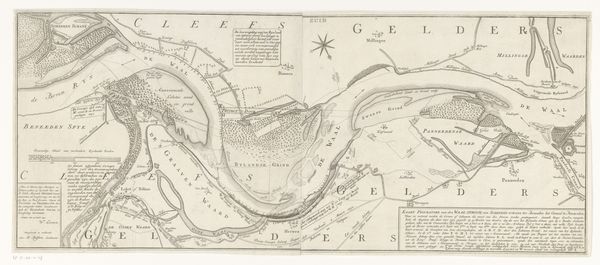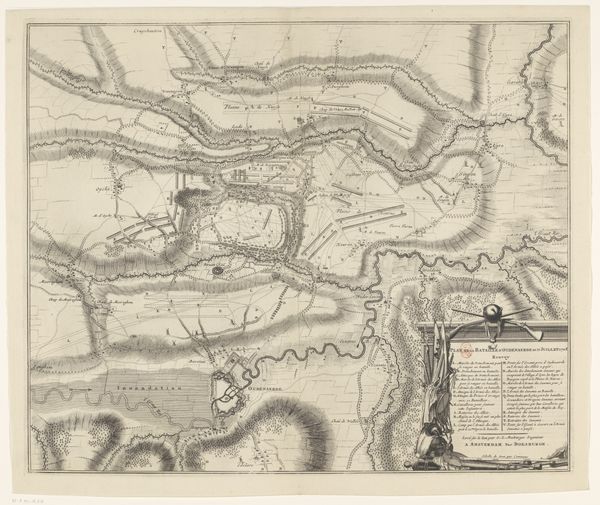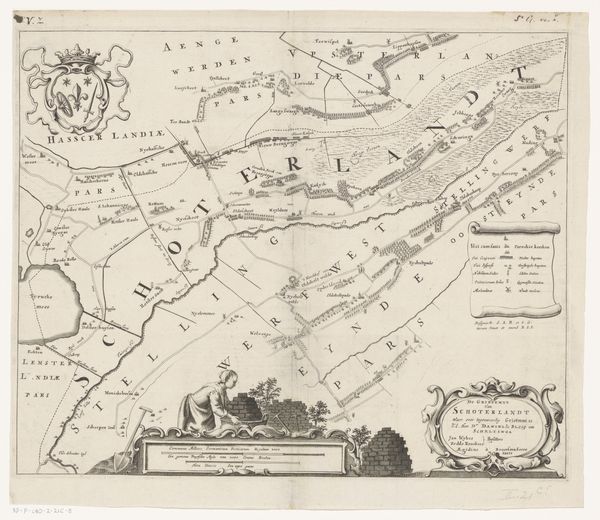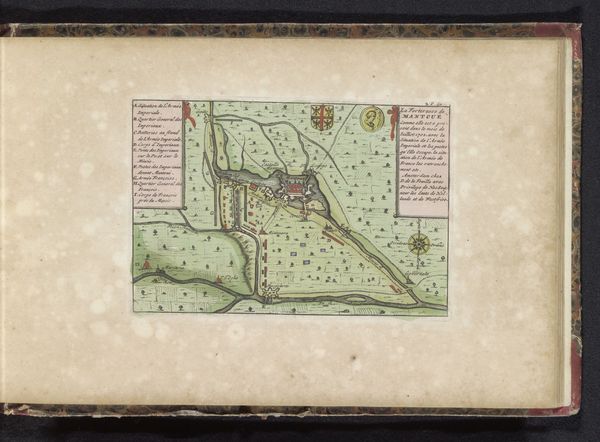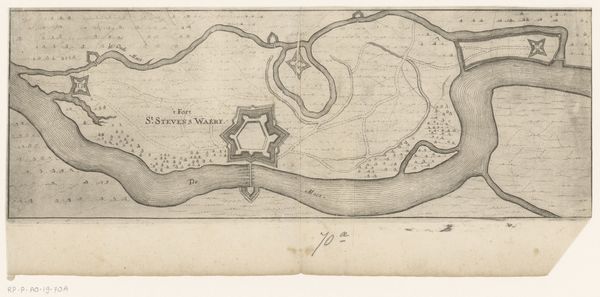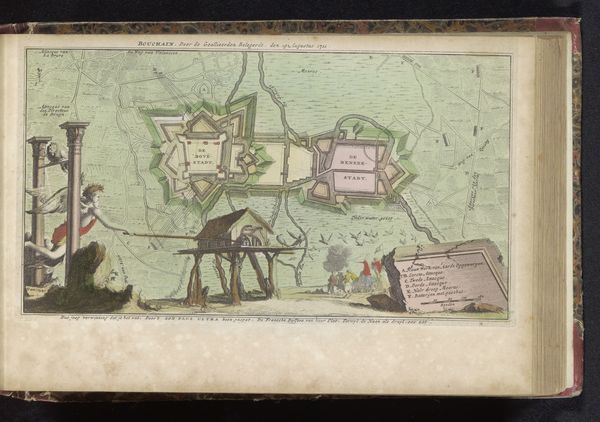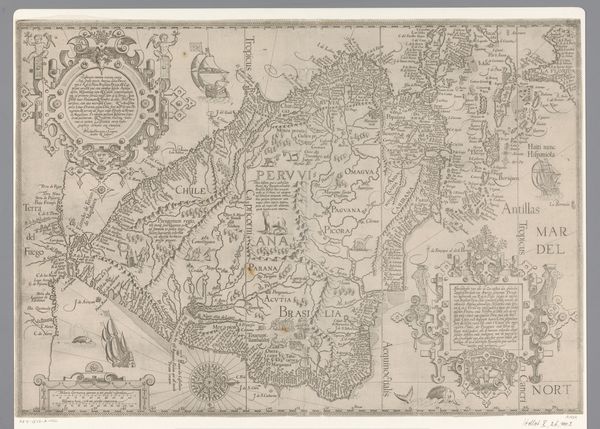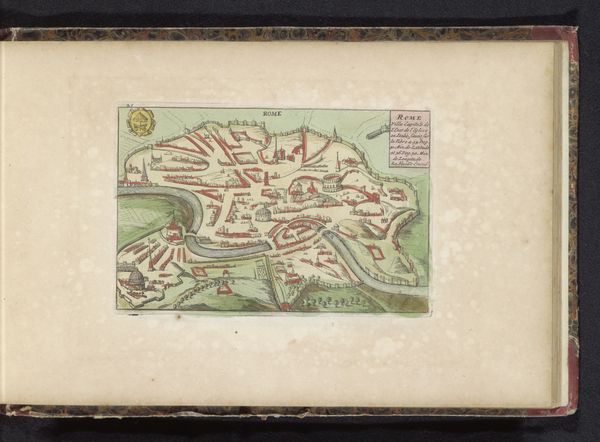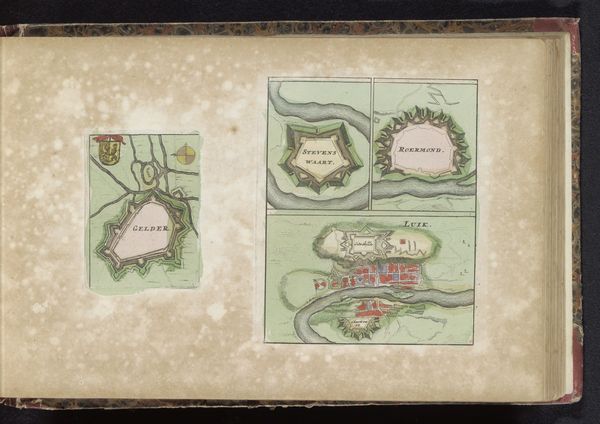
print, watercolor
# print
#
watercolor
#
coloured pencil
#
cityscape
#
watercolour illustration
#
history-painting
#
watercolor
Dimensions: height 162 mm, width 271 mm
Copyright: Rijks Museum: Open Domain
Curator: We’re looking at "Overval op Cremona, 1702," or “Surprise of Cremona, 1702,” a watercolor and print created sometime between 1700 and 1735 by an anonymous artist. Editor: My first impression is a strong sense of miniaturization. It’s a beautifully rendered bird’s-eye view that feels incredibly intricate despite the apparent chaos of a siege. Curator: Absolutely. As a historical record, this piece provides insight into early 18th-century military engagements and urban life, focusing on a very specific event within the War of the Spanish Succession. The prints and watercolors were likely commissioned to spread narratives about political struggles in Europe. Editor: It’s fascinating how the artist uses colored pencils to delineate the architecture and terrain, giving definition to everything—the fortified city walls, the Po River bisecting the land, and the precise arrangements of troops. Curator: Note the level of detail! Each tiny figure within the city or arrayed outside tells a story. Maps and cityscapes like this became crucial visual tools, serving both practical purposes and propagating specific political views. Consider how accessible they would've made conflict, to elite patrons and the larger public. Editor: I wonder about the conditions under which such a delicate watercolor was created. Was it produced on-site or meticulously rendered afterward from sketches? The materials themselves – paper, pigments, binding – speak to a whole system of craft and industry during wartime. Curator: It’s likely based on eyewitness accounts combined with pre-existing cartography of the region. The combination of precision and artistic license speaks to the power dynamics at play— who is deciding what details to highlight, what narrative to promote? It highlights that prints and drawings had their own ways of participating in political events. Editor: Indeed! And beyond its factual depictions, the picture has a vivid beauty that really draws you in. What colors, papers, and printmaking equipment were available at this time in Cremona? This work provides insight into how information and propaganda traveled between state, and society. Curator: Thinking about the larger implications—art was being weaponized and distributed as evidence or record, which shaped the way events were understood then and the way they are now remembered today. Editor: It’s a confluence of many narratives! From artistry to propaganda, its existence tells volumes about that period’s technology, economy, and social concerns. Curator: This examination reminds me to question, whose Cremona are we viewing here, and from what perspectives has it been framed for our consideration? Editor: Exactly! The confluence of technique and strategy in art production provides many entryways into the understanding of the world that it emerged from.
Comments
No comments
Be the first to comment and join the conversation on the ultimate creative platform.
